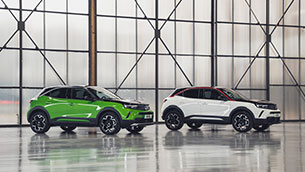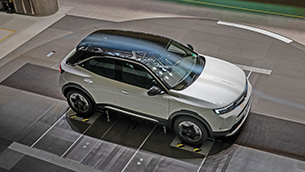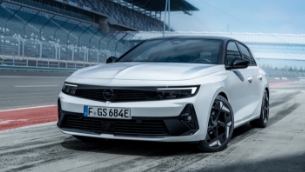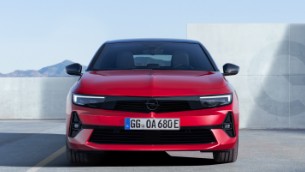Opel and GM Develop Vehicles with a Sixth Sense
In its second international forum, the CAR 2 CAR Communication Consortium (C2C-CC) is demonstrating for the first time worldwide vehicle-to-X communication independent of manufacturer or vehicle-type. Opel is hosting the event at the GM Dudenhofen Test Center in Germany.
Preventing accidents by warning drivers about potential danger from other vehicles was a major goal during the development of the new General Motors/Opel C2C (car-to-car or vehicle-to-vehicle) communication systems. Vehicles equipped with this technology can communicate with each other and exchange information such as location and speed. Drivers can then be warned in advance if another vehicle is stopped in an area that is difficult or impossible to see, or about to enter the same intersection as they are.
"Driving is a very complex task. Knowing where the other guy is and where he's headed can be as critical as being in control of your own vehicle," said Hans-Georg Frischkorn, Executive Director, Global Electrical Systems, Controls and Software. "With C2C technology, we intensify the driver's awareness of his environment to improve road safety, without any distraction to him and certainly without reducing his level of control. This sixth sense lets drivers know what's going on around them to help avoid accidents and improve traffic flow."
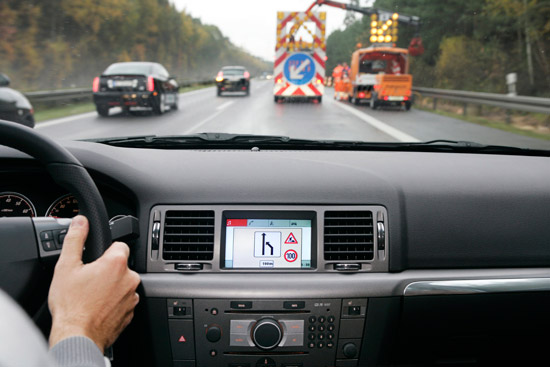
For these systems, GM/Opel uses proven, reliable components that are part of everyday life. The hardware consists of a microprocessor, GPS receivers (Global Positioning System) and Wireless LAN modules. The vehicles establish communication within a few hundred meters of one another and exchange information such as location, speed, acceleration and direction of travel.
Today, vehicles can be equipped with multiple safety sensors, including radar-based sensors connected with speed control devices, lane change assistance systems or sensors to detect objects in a car's blind spot. GM/Opel can increase the operating range and coverage of individual sensors significantly with its comprehensive technology - a more effective and affordable way to provide extensive observation and assessment of the surrounding traffic conditions.
Demonstration with typical driving situations
GM/Opel engineers demonstrate the new technology's advantages with a range of practical exercises. Several functions help prevent the rear-end collisions that occur on a daily basis due to poor visibility, twisty roads or short lapses in driver concentration. For example, the system warns of a stationary vehicle on the road even before the driver behind can see it, for example around a corner. Depending on the situation, the system transmits these warnings visually, acoustically or through vibrations in the driver's seat.
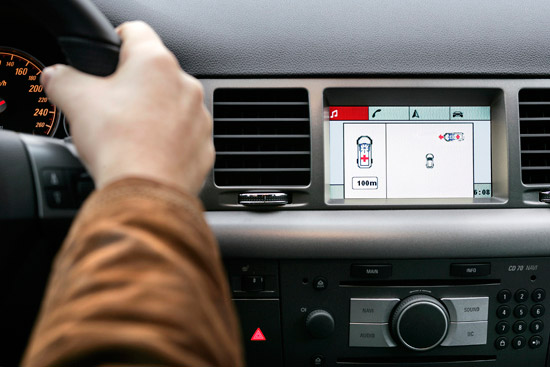
In another scenario, a collision warning system improves safety while approaching intersections. Even if there is no visual contact between the drivers of two vehicles, the system detects any collision danger in advance and alerts both drivers if they need to intervene, for example by braking. Work zones or emergency vehicles can also transmit signals to drivers if a lane is closed or a path needs to be cleared.
Goal: Wide availability for as many vehicles as possible
GM/Opel has deliberately based this technology on inexpensive, proven components, giving it the potential to become standard equipment in many vehicles. The alternative would be to offer extremely expensive high-tech systems for just a few cars, but as Hans-Georg Frischkorn says: "GM/Opel has always been committed to democratizing innovations. Our C2C systems are affordable and could potentially be used in every vehicle class. That's especially important because cooperative systems like these become more effective when many vehicles are equipped with them."
